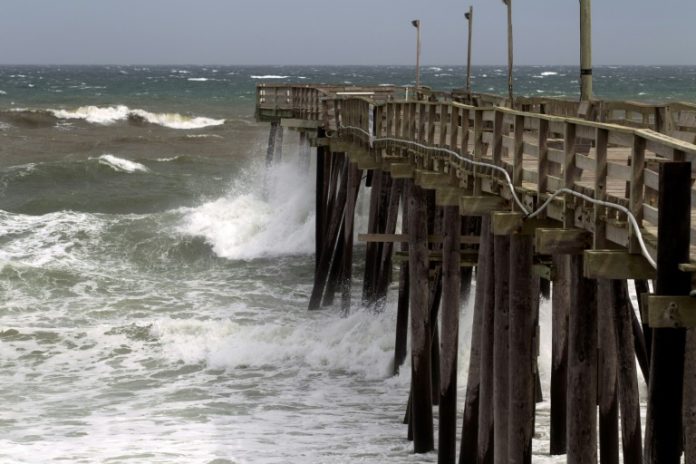North Carolina braced for a “long night” of strong winds and driving rain as Hurricane Dorian moved near the US state’s coast Friday after devastating the northern Bahamas, where it left at least 30 people dead and thousands homeless.
Authorities in the state of Florida – which was largely spared by the storm – blamed six more deaths on the hurricane, US media reported, though they occurred as the victims were preparing for the storm’s arrival or were evacuation-related.
“Dorian should remain a powerful hurricane as the center moves near or along the coast of North Carolina,” the Miami-based National Hurricane Center (NHC) said Friday morning, after downgrading it to a Category 1 storm.

It warned that although weakening, the hurricane was still packing winds of 90 miles per hour (150 kilometers per hour), with some areas of the Carolina coast forecast to see dangerous storm surges of up to seven feet (2.1 meters) and between six and 12 inches of rain.
“We know we’re in for a long night and we’ll be eager to see the sunshine in the morning,” North Carolina’s Governor Roy Cooper told CNN on Thursday night.
The slow-moving monster storm also spawned several tornadoes but there were no immediate reports of casualties.

Many residents of coastal Carolina heeded evacuation orders while others battened down their homes with plywood and prepared to ride out the tempest.
The center of the storm was expected to move to southeast New England Friday night and Saturday morning, and then across Nova Scotia late Saturday.
US President Donald Trump tweeted that he had spoken to the governors of North and South Carolina, telling them he is “ready to assist.”

Dorian was a Category 5 hurricane – the highest on the five-level wind scale – when it slammed into the northern Bahamas on Sunday, leaving a trail of immense destruction.
An AFP team in the town of Marsh Harbour on Great Abaco on Thursday saw scenes of catastrophic damage with homes reduced to matchsticks, overturned cars, fields of jumbled debris, widespread flooding and beached boats.
Teams of men in masks and white protective suits were seen loading corpses encased in green body bags onto a flatbed truck.
Storm-dazed residents were out on the streets dragging suitcases containing their most precious possessions.
The full extent of the damage in the northern Bahamas was becoming known on Thursday as rescue teams fanned out searching for survivors and bringing relief to victims.

Prime Minister Hubert Minnis told CNN that at least 30 people were killed in the storm, which caused what he called “generational devastation.”
The death toll is expected to rise.
The United Nations said 70,000 people in the Bahamas were in immediate need of aid.
“It’s hell everywhere,” said Brian Harvey, a Canadian from Montreal, told media in Great Abaco.
“I was on my sailboat,” Harvey said. “I lost everything.”

“We need to get out of here,” he added. “It’s been four or five days. It’s time to move and get out of here.”
Steven Turnquest, who arrived in Nassau from Marsh Harbour with his four- and seven-year-old sons after weathering the storm, told AFP he was grateful to be alive.
Speaking of his sons, Turnquest said he prayed to God to “take me and let them live.”
“I survived the hurricane holding on to a door.”
Amid fears of lawlessness in the ravaged storm zone, Minnis warned that any looters will be prosecuted “to the fullest extent of the law,” and additional police and defense force officers deployed.
US and British helicopters were conducting medical evacuations, aerial assessments to help coordinate relief efforts, and reconnaissance flights to assess the damage.
The US Coast Guard said it had rescued 201 people in the Bahamas as of Thursday.
The UN’s World Food Programme said it had eight tons of ready-to-eat meals poised to arrive in the Bahamas.
The WFP said it is organizing an airlift from the UN hub in Panama of storage units, generators, and prefab offices for two logistics hubs to be established on the main islands.







